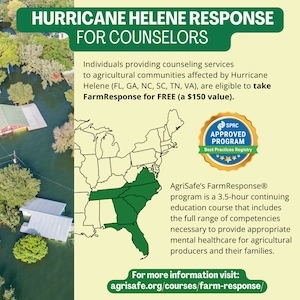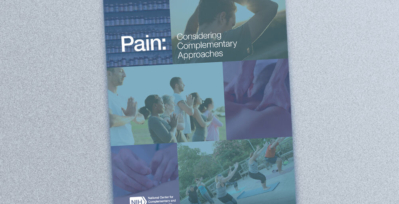Last updated on July 18th, 2024 at 09:27 am
Opioids Resources
In 2017, the US Department of Health and Human Services declared the opioid crisis a national public health emergency. Opioids are drugs that can be natural, semi-synthetic, or synthetic. The most common opioids are oxycodone, hydrocodone, codeine, morphine, fentanyl, tramadol, and heroine. Opioid misuse occurs everywhere; it is not isolated to just urban areas, but exists also in rural areas.
Since the 1990’s, opioid misuse and overdose deaths have continually increased. There have been three major waves of opioid overdose deaths in America: the 1990’s marked a rise in prescription opioid overdose deaths, 2010 marked a rise in heroin overdose deaths, and 2013 marked a rise in synthetic opioid overdose deaths (CDC source). The National Vital Statistics System (NVSS) details the drug overdose deaths in the US per year: in 2017 there were ~70,699 overdose deaths, in 2018 there were ~67,850 overdose deaths, in 2019 there were 71,130 overdose deaths, and in 2020 there were 92,183 overdose deaths. 2018 was the first and only year there was a decrease in overdose deaths.
Research shows a correlation between COVID-19 and the raise in overdose deaths from the end of 2019 to present day. The COVID-19 pandemic caused people to live in isolation without access or options for treatment and resources.
In addition, the #FarmTownStrong campaign reveals that the opioid crisis has struck farm and ranch families harder than the rest of rural America. In 2017, the American Farm Bureau Federation and the National Farmers Union sponsored a Morning Consult Survey that revealed the following:
- 3 in 4 farmers say it would be easy for someone in their community to access a large amount of prescription opioids and painkillers without a prescription
- Only 1 in 3 rural adults say it would be easy to access treatment for addiction to prescription drugs or heroin in their local community
- Only 2 in 5 are confident they could seek care that is either effective, covered by insurance, convenient or affordable
If you or a loved one are living with a substance use disorder, consider checking out FindTreatment.gov or calling 1-800-HELP to find a substance use treatment center near you or to get more information.
Opioids Resources
AgriSafe Course
Fact Sheets and Infographics
| ID | Title | Summary | Link |
|---|---|---|---|
| 9848 | ACOEM Practice Guidelines: Opioids and Safety-Sensitive Work | ACOEM has updated the treatment guidelines concerning opioids. This report highlights the safety-sensitive work recommendation that has been developed. | |
| 9849 | ACOEM Practice Guidelines: Opioids for Treatment of Acute, Subacute, Chronic, and Postoperative Pain | The American College of Occupational and Environmental Medicine’s guidelines for treatment of acute, subacute, chronic, and postoperative pain with opioids. | |
| 10350 | Alcohol Use in Agriculture | episode of Talking Total Farmer Health | |
| 9843 | Clinical Opiate Withdrawal Scale | The Clinical Opiate Withdrawal Scale (COWS) is an 11-item scale designed to be administered by a clinician. | |
| 9845 | Nonopioid Treatments for Chronic Pain | Guidelines produced by the CDC on the usage of non-opioid treatments for chronic pain. | |
| 9842 | Opioid Overdoses Treated in Emergency Departments | A CDC informational resource on opioid overdoses treated in emergency departments. | |
| 9846 | Opioids for Acute Pain: What You Need to Know | Guidelines produced by the CDC regarding the usage of opioids to treat acute pain. | |
| 9847 | Prescription Drug Monitoring Program (PMDPs) | Improving the way opioids are prescribed will ensure patients have access to safer, more effective chronic pain treatment while reducing opioid misuse, abuse, and overdose. | |
| 9844 | Quick Reference for Healthcare Providers: Opioid Prescribing Guidelines | Guidelines produced by the CDC on the usage of opioids to treat chronic pain. | |
| 9840 | Talking to Farmers About Pain Management and Opioid Use | A guide for rural health and safety professionals on talking to farmers about pain management and opioid use. | |
| 9875 | Talking to Farmers About Their Pain Resource Guide | A resource guide created specifically for talking about pain with farmers. |
Webinars
| Webinar Title | Summary | Link |
|---|---|---|
| Assessment of Opioid Misuse Risk Among Farmers in the Clinical Setting | Prescription opioids are often the first-line therapy to treat chronic and acute pain among farmers. Prescribing opioids to farmer populations that may not seek regular treatment or have access to alternative therapies increases the risk for potential opioid misuse. Properly assessing for these characteristics among other abuse or addiction risk factors, is critical in providing treatment that is both appropriate and effective. The training module will seek to provide insight on misuse risk factors among farmers to better inform healthcare providers on warning signs in this specific cohort. | |
| Safety Sensitivity of Opioid Use in High Hazardous Industries Such as Agriculture | The American College of Occupational and Environmental Medicine released recommendations for opioid prescribing based on safety-sensitive occupations. Safety-sensitive work is typically classified as operating motor vehicles, modes of transportation, other heavy machinery, or tasks requiring high levels of cognitive function or judgment. Farm duties frequently demand the use of heavy machinery, and concurrent use of narcotics alongside safety-sensitive work can be dangerous. This training educates healthcare providers on how to assess occupational agricultural risks and corresponding patient guidance for those who are taking opioid medications. | |
| Talking to Farmers About Pain | The occupational hazards that farmers face put them at greater risk for acute and chronic pain as a result of ergonomic repetition, accident, or surgical procedure. Addressing specific occupational sources of pain and what activities the pain inhibits are crucial to improving treatment. This module will focus on how to transform the conversation between provider and patient to improve health outcomes and patient satisfaction. | |
| Using Naloxone to Reverse Opioid Overdose in the Agricultural Workplace: Information for Employers and Workers | In 2018, the U.S. Surgeon General called for increased awareness and availability of naloxone, the opioid antagonist, to reverse the effects of opioid overdose. Despite the rise in the dispensing of naloxone, there is a significant gap in our response across all sectors of society. In the rural parts of our country, where emergency response times can be dangerously long, developing a workplace naloxone availability and use program could ultimately save lives. This webinar will share information from the National Institute for Occupational Safety and Health (NIOSH) to help employers and workers understand the risk of opioid overdose and the role of naloxone. |
Websites
Page updated: July 2021




